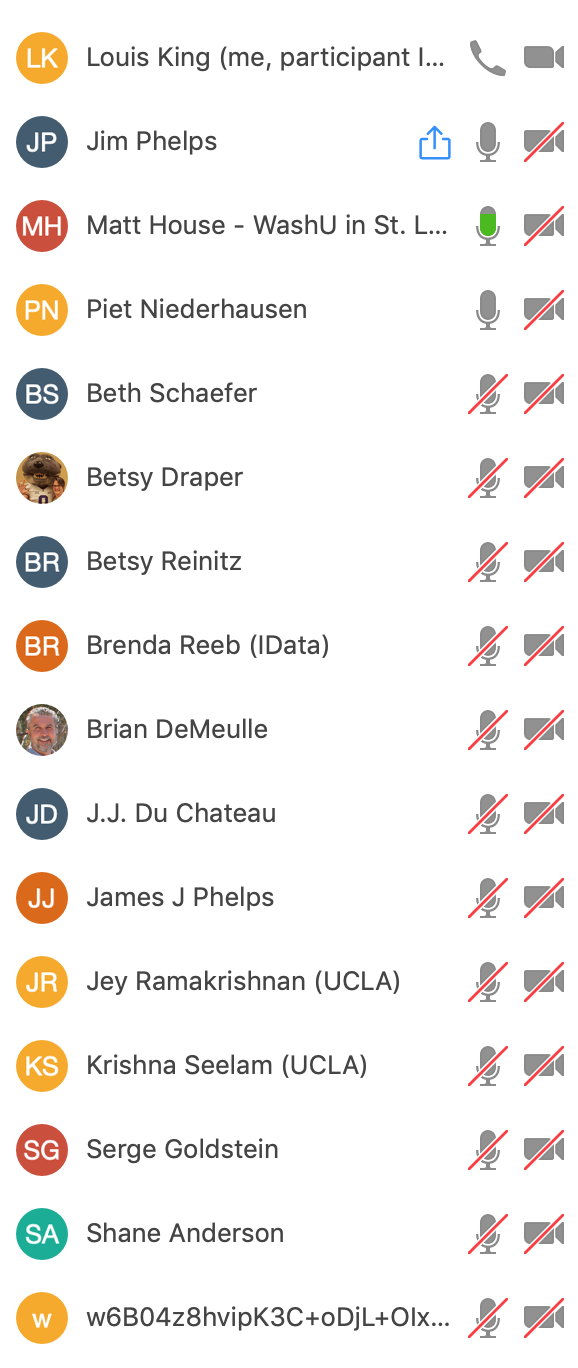Agenda
Agenda for next call
- Roll Call (by timezone - East to West)
- Scribe Shout-out - It's easy to scribe: How To Scribe Itana Calls Guide
- Agenda Bash
Topic: Organized Anarchy - Continuing the Conversation - Matt House, Piet Niederhausen
- Itana Org Updates
- Working Group Updates
- New2EA Working Group
- API Working Group
- Business Architecture Working Group
- EA Maturity Model Working Group
- Book Club - Reading Suggestions? Lead?
- Steering Committee Update
- Working Group Updates
Attendees
Announcements - Itana News, Working Group Report out
Topic Title (change to the call topic)
Matt’s materials (article and slides from last time) are here: https://sites.wustl.edu/mhouse/items/organized-anarchy-itana-presentation/
Questions/comments people made online since last time are here: https://docs.google.com/document/d/1JwfeOlnoMHZzfle3Nak8gzLMSuWsFfMONrSaCQ-GqsE/edit#
Chris Eagle’s responses/thoughts he shared online are here: https://docs.google.com/document/d/1HatjifpzJFPJ3a80_O4rwF8-1DL6qCHBd-KjzIKoTjU/edit
Piet has a blog with some additional thoughts is here: http://niederhausen.blogspot.com/
- What questions do people have?
- Can an institution have a combination of these models?
- Absolutely. Most institutions will exhibit multiple facets.
- It is not only the formal structure of the organization but also the informal structures of the organization.
- Some organizations are intentionally anarchic. For instance, the don't publish an org chart of hierarchy.
- Faculty often resists this.
- Does EA potentially have a role in having parts of the organization be intentional about their structures?
- I would say that getting people to recognize their own structure in the organization is important, especially when the work is cutting across organizations
- The IT team at UW was working with facilities which is highly hierarchal. The team in IT was using agile that did not mesh with the management approach of the facilities group. It took time to figure out how this was going to work.
- Serge had an engagement to work on agreement to what University buildings are. It was eye opening to get people to agree on what a University building was.
- Louis worked with the cultural heritage organization to develop an organizational model to foster a new cross-departmental collaboration including the five library and museum units. A governance model, financial model, and service maturity model where developed and especially appreciated by the Directors?
- Are people working on developing models for your work on campus.
- Louis shared using the adoption model for standards pointing out how the organized anarchy model fits as a nice overlay to existing models. In this case thee OA model can be used to accelerate adoption.
- Matt followed up on the complexities with standards and exceptions and how the culture plays out in accepting the standards or not.
- As soon as something crosses one organizational model it is important to work on understanding how the organization is going to work.
- If you can solve some problems in regard to standards they may be adopted.
- One of the key attributes of organized anarchy is that the decision process is not always clear. Garbage can approach.
- In addition to the service we offer a plug and play package solution to make it as easy as possible.
- Part of this is around the limited attention span people have.
- The labeling ability of the model is very helpful. What are the strengths and affiliations between people and then how can you work successfully within that system.
- This framework helps people do this. This is a common reaction.
- What can we do as architects to help improve the situation
- Help new people understand this
- At UW different parts of the IT org are running differently and if we can get our senior leadership team to see this, that will help. Can we label this? Can we help our IT organization be more self aware and effective.
- Faculty committees are very difficult structures for decision making.
- What should we expect and ask of the people we are working with.
- We should be clear about how decisions are going to be made.
- EA can bring a structured approach to engaging in conversations across the organizational anarchy and structure to the decision making so that the anarchy feels that their input is heard and the decisions makers incorporate those viewpoints into their decisions.
- What will others do when they get back.
- Plan on including an informational packet on these structures to use with clients to help them think about this. How do I wrestle with my institution.
- Are there ways we can help people work better within our engagements.
- Using this model to be more thoughtful about engagements. Orienting prior to an engagement.
- How do people identify themselves? What do people say about what they are going
- The thread about being more thoughtful is a big theme and good topic for New2EA.
Organizational Updates
New 2EA program starting next Wednesday.
API working group has a call coming up.
Business Architecture group has a call next Friday.
New2EA full day workshop at Educause - start planning
EA Constituent Meeting at Educause
If you have an approved session at Educause let the Steering Group know.

